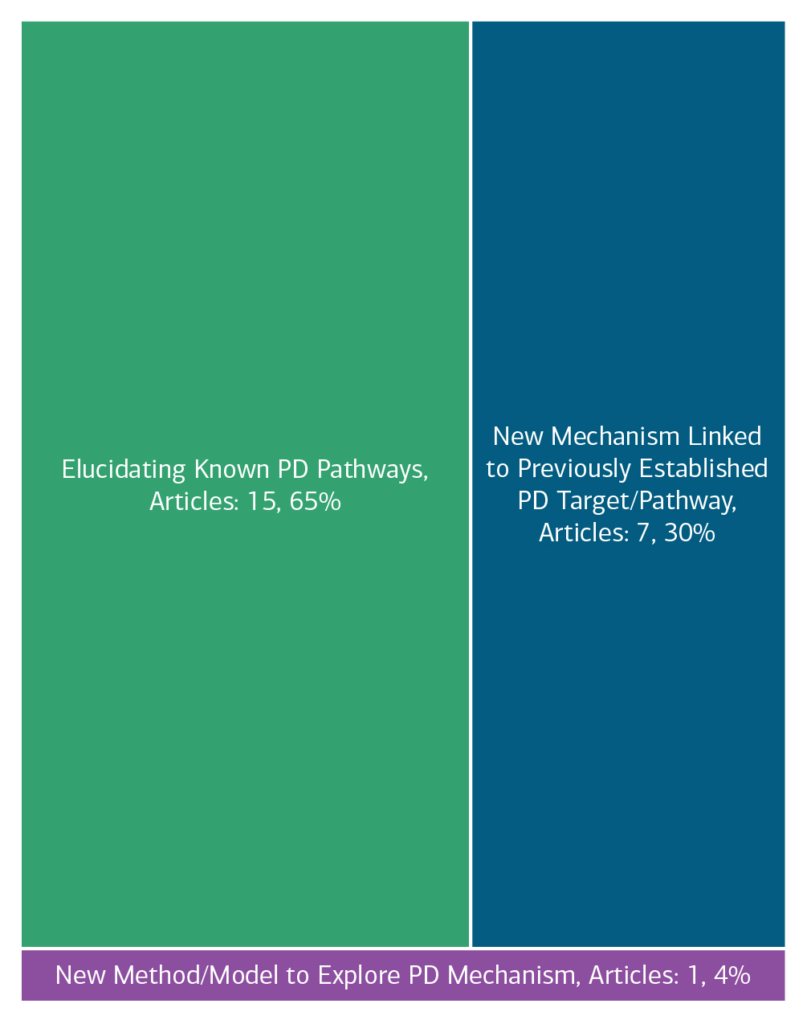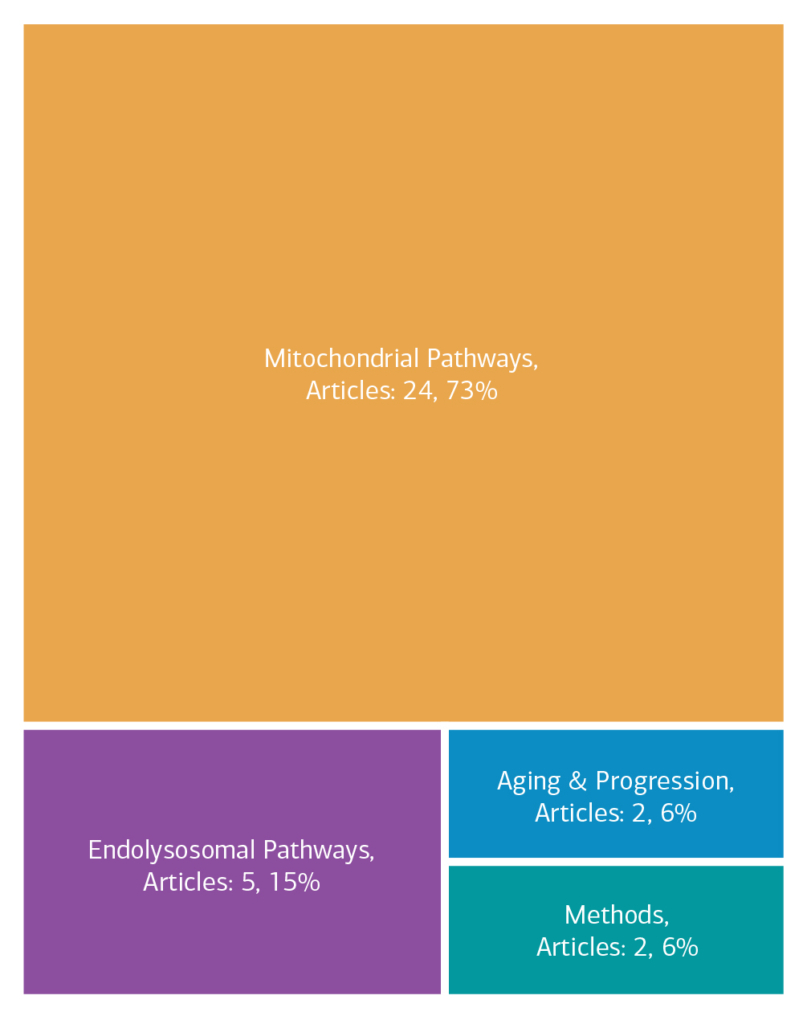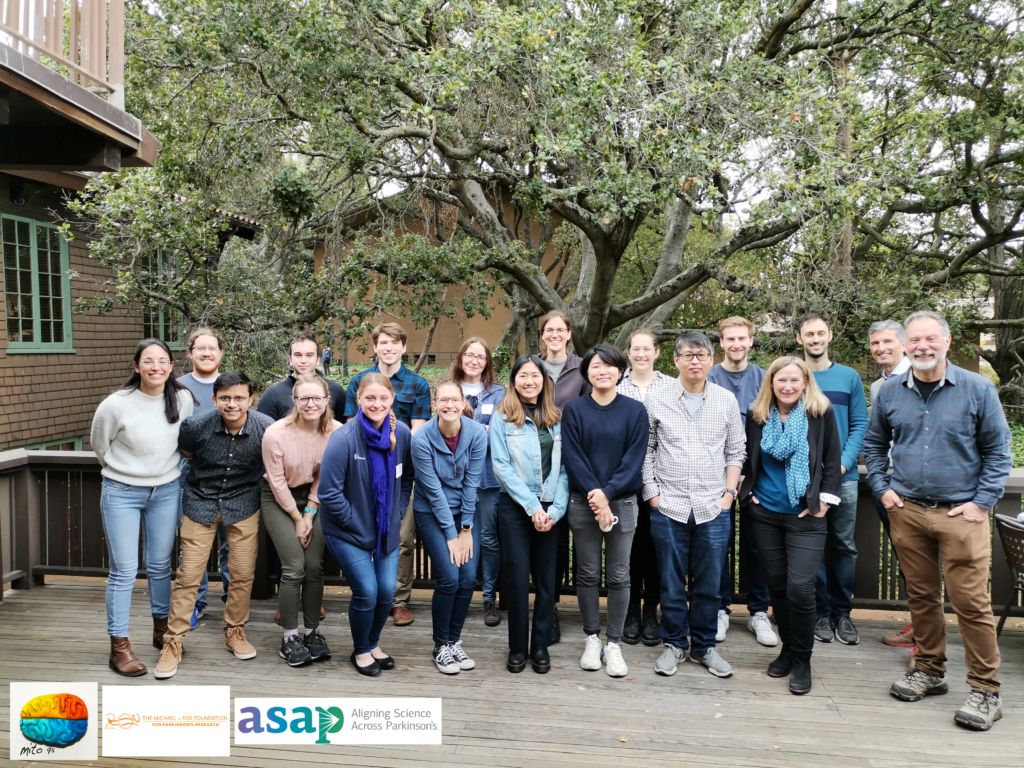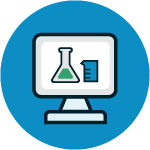PD Functional Genomics | 2020
Mechanisms of Mitochondrial Damage Control by PINK1 and Parkin
Study Rationale: Mitochondria are tiny power-generating stations within all cells, including neurons. They are vital energy producers, but when things go wrong, they can spew toxic materials and sicken or kill neurons. The clean-up crew for mitochondria gone wrong is called “mitophagy” (as in “eating mitochondria”) and is directed by two proteins called PINK1 and parkin. Studies of Parkinson’s disease have taught researchers that PINK1, parkin and mitophagy are very important in preventing disease.
Hypothesis: The purpose of this project is to figure out how PINK1, parkin and mitophagy work together to prevent disease. Once Team Hurley knows how they work together, they hope to figure out how to make them work faster and better, so that they can prevent Parkinson’s disease from ever starting.
Study Design: Team Hurley thinks of PINK1, parkin and the proteins of mitophagy as nanomachines. They call their type of research “mechanistic” because it seeks to understand how these machines work. Team Hurley relies heavily on the most powerful light and electron microscopes available, and they also use genome engineering of stem cells to make versions of neurons that are easier to study.
Impact on Diagnosis/Treatment of Parkinson’s Disease: Team Hurley’s dream is to understand PINK1, parkin, and mitophagy so well that they can build a computerized description of the pathway that will be able to predict which drugs and treatments will help the mitochondrial clean-up crew enough to prevent or cure disease.
Leadership
Project Outcomes
If successful, the project will provide a therapeutically actionable basis for where and how mitophagy can best be activated to promote the health and longevity of the dopaminergic neurons affected in Parkinson's Disease. View Team Outcomes.
Team Outputs
Click the following icons to learn more about the team’s outputs:
Overall Contributions
Here is an overview of how this team’s article findings have contributed to the PD field as of May 2025. There are two different categorizations of these contributions – one by impact to the PD community and a second by scientific category.
Impact

Category

Featured Output
Below is an example of a research output from the team that contributes to the ASAP mission of accelerating discoveries for PD.
Mitochondrial damage triggers concerted degradation of negative regulators of neuronal autophagy
Autophagy, a process that targets damaged cellular components for breakdown, is often found to be dysfunctional in neurodegenerative diseases such as Parkinson’s. In particular, failure to break down damaged mitochondria is highly detrimental to neurons. In this study, the authors identify a key suppressor of autophagy in neurons under resting conditions, which is called Rubicon. The authors found that when neurons are stressed, the Rubicon and other negative regulators of autophagy are degraded, leading to more effective autophagy. They propose that this pathway allows neurons to respond more effectively to acute mitochondrial damage, maintaining neuronal health.
Team Accolades
Members of the team have been recognized for their contributions.
- Open Science Champions: Dorotea Fracchiolla
- Network Spotlights: Dorotea Fracchiolla, Bishal Basak
- Awards
- 2023 Collaborative Meeting: Wai Kit (Leo) Lam (Second Place Winner in PD Functional Genomics; London)
- COSA Prize Winners 2024: Elias Adriaenssens (Third Place)

In the News
- $14 Million Boost for Parkinson’s Disease Research (University of California, Berkeley, press release, September 16, 2020)
- Finding Rewrites Understanding into Parkinson’s Disease Pathway (Science Daily, June 27, 2023)
- Molecular Switch for Toxic Protein Disposal May Be Parkinson’s Target (February 24, 2025)












